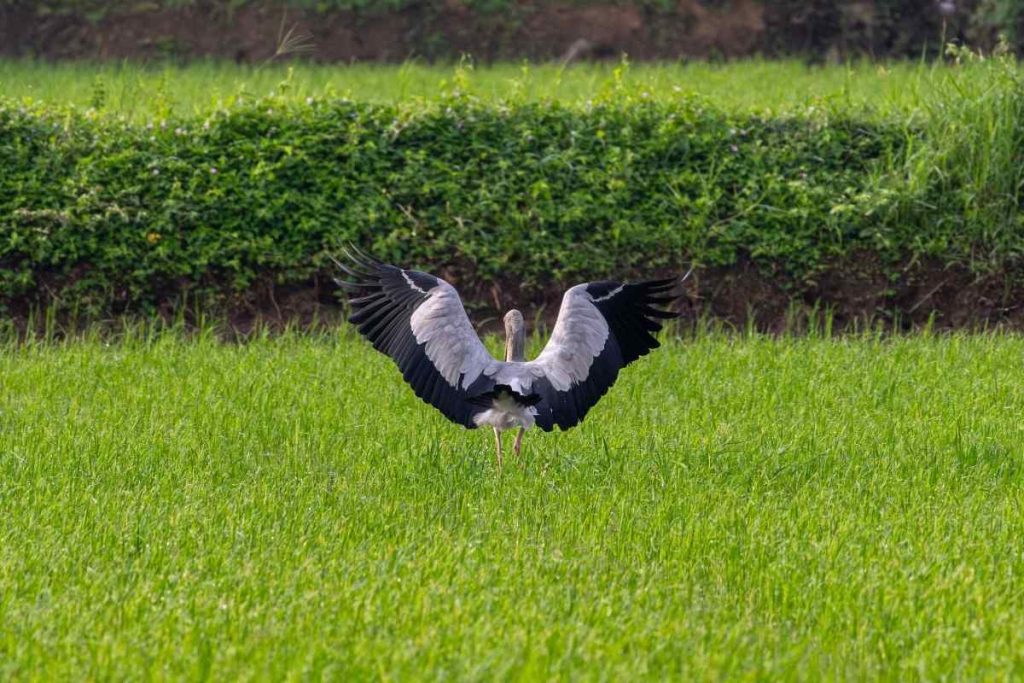The Asian Openbill Stork is a large wader found in Southeast Asia and the Indian subcontinent. Notable for its gap between the upper and lower jaws, it feeds on snails. It nests in colonies, lays 2-4 eggs, and forages in wetlands.
The Ciconiidae family of storks includes the large wading Asian openbill or Asian openbill stork (Anastomus oscitans). Specifically, this unusual stork primarily inhabits Southeast Asia and the Indian subcontinent. Adults have a gap between their arched upper and recurved lower jaws, and they are either greyish or white with glossy black wings and tail.

Focused Hunter With patience, the openbill hunts in silence.
This gap, which is believed to be an adaptation that helps them handle snails, their primary prey, is absent at birth. Initially, it develops as they grow. Asian openbills typically soar on thermals during the warmer hours of the day and descend quickly into their feeding grounds.

Vigilant Stance The openbill stands, alert and poised in nature.
Groups forage together in marshy areas or shallow water, traveling slowly. They rarely appear along riverbanks or coastal flats; instead, inland wetlands serve as their typical foraging areas. Additionally, birds graze in crop fields, irrigation canals, and seasonal wetlands within agricultural landscapes.

Field Arrival The Asian Openbill lands gracefully in the field.
Birds may relocate widely in reaction to changes in their environment. After fledging, young birds also spread out extensively.Groups forage together in marshy areas or shallow water, traveling slowly. They rarely appear along riverbanks or coastal flats; instead, they use inland wetlands as their typical foraging areas. Additionally, they graze in crop fields, irrigation canals, and seasonal wetlands within agricultural landscapes.

Paddy Watch The bird observes its surroundings in the field.
The nesting trees may be single-species colonies or shared with egrets, cormorants, and darters. Aside from the clattering sound during copulation, they are silent, like other storks. When a mate arrives, they greet them with low honking notes and bill movements. Males can occasionally form polygynous relationships, usually with two females laying eggs in the same nest.
Copyrights : All the photos and texts in this post are the copyright of John Thomas and Creative Hut Institute of Photography and Film. Their reproduction, full or part, is forbidden without the explicit approval of the right owners.


